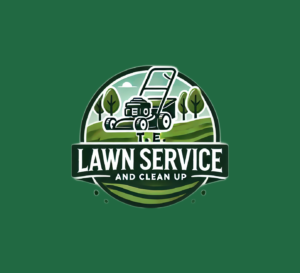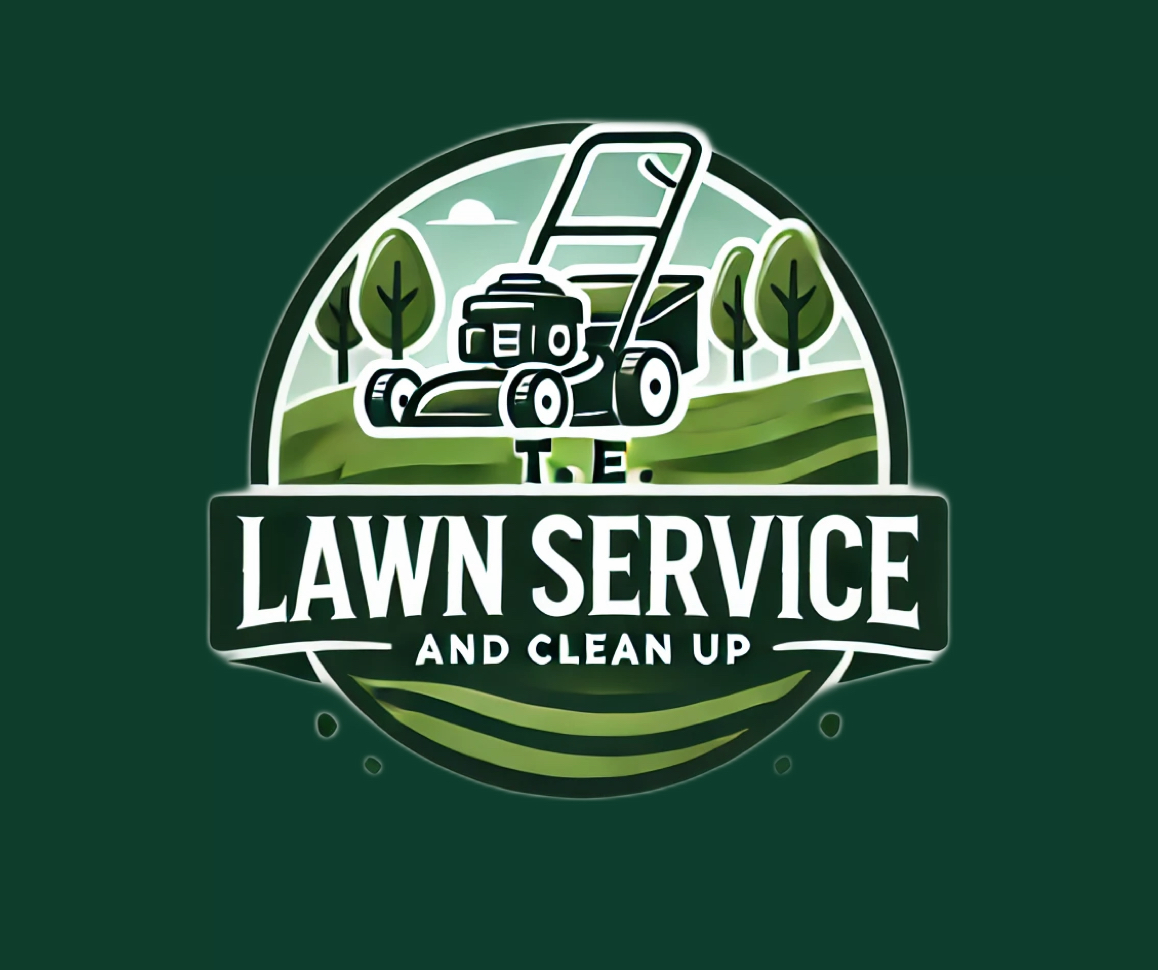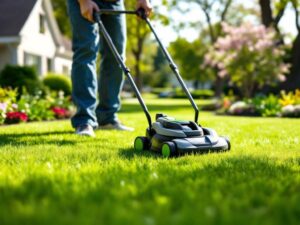As the heat of summer fades and the crisp fall air settles over Atlanta, homeowners start preparing their properties for the colder months ahead. Fall is more than just raking leaves—it’s the season to get your yard ready for winter so your lawn, garden beds, and landscaping come back healthier and stronger in spring.
At TE Lawn Service and Clean Up, we know how important seasonal yard maintenance is for Atlanta homeowners. A proper fall cleanup prevents lawn diseases, controls pests, and protects your landscaping investments. This detailed checklist covers everything you should do before winter—and explains when it’s best to call in professional help.
Why Fall Cleanup Matters in Atlanta
Atlanta’s climate brings warm, humid summers followed by relatively mild winters. While winters here aren’t as harsh as in northern states, the cooler weather still stresses grass, shrubs, and trees. Neglecting fall cleanup can lead to:
- Piles of leaves that smother grass and invite mold.
- Dead plants that attract pests.
- Soil compaction from heavy rains.
- Lawns weakened by winter stress, making spring recovery harder.
By taking care of your yard now, you’ll save time and money in the long run while ensuring your lawn looks great when spring returns.
Step 1: Rake and Remove Leaves
One of the biggest fall chores is dealing with fallen leaves. While a light layer can be mulched back into the lawn for nutrients, too many leaves block sunlight and trap moisture, leading to mold and dead patches.
Tips for raking in Atlanta:
- Use a leaf blower or rake weekly to keep leaves from piling up.
- Bag leaves or add them to a compost pile.
- Mulch with a mower if leaf coverage is thin.
Pro Tip: Wet leaves are slippery and heavy, so tackle them before rainfall whenever possible.
Step 2: Mow One Last Time
Before grass goes dormant, give it a final mow. Atlanta homeowners with warm-season grasses like Bermuda and Zoysia should lower the mower height slightly for the last cut—about 1.5 to 2 inches. For cool-season grass like Fescue, keep it taller at 3 to 4 inches.
A shorter cut helps prevent matting under leaves, while leaving Fescue taller protects it through winter. Make sure mower blades are sharp for a clean cut that won’t stress the lawn.
Step 3: Aerate the Soil
Fall is the best time for aeration in Atlanta. Over the summer, soil becomes compacted from foot traffic, pets, and heat stress. Compaction prevents water, oxygen, and nutrients from reaching the roots.
Core aeration pulls small plugs of soil from the ground, loosening compacted areas and preparing your lawn for overseeding or fertilizing. TE Lawn Service offers aeration services with commercial-grade equipment for maximum effectiveness.
Step 4: Overseed Thin Areas
If your lawn looks patchy after summer, fall is the time to fix it. Overseeding fills bare spots and thickens turf, preventing weeds from invading in spring.
- Fescue lawns should always be overseeded in fall (September–October).
- Warm-season grasses typically don’t need overseeding, but any bare patches can be addressed with sod or plugs.
Pair overseeding with aeration for best results, since loosened soil gives seeds more contact with nutrients and water.
Step 5: Fertilize for Winter Protection
Your grass needs the right nutrients to survive winter and bounce back in spring. A fall fertilizer application builds strong roots and increases stress tolerance.
In Atlanta:
- Warm-season grasses (Bermuda, Zoysia, Centipede): Fertilize in early fall with potassium-rich blends. Avoid heavy nitrogen late in the season, which promotes top growth instead of root strength.
- Cool-season grass (Fescue): Fertilize in both early and late fall to fuel growth and prepare for winter.
A soil test helps determine exact nutrient needs. TE Lawn Service can create a customized fertilization plan for your specific lawn.
Step 6: Remove Dead Plants and Weeds
Old annuals, dead perennials, and weeds should be pulled before winter. Leftover plant material attracts pests, harbors disease, and makes spring cleanup harder.
- Remove vegetable garden remnants.
- Trim back perennials to a few inches above soil level.
- Pull weeds completely, roots and all.
By clearing beds now, you give spring flowers and shrubs the best chance to flourish.
Step 7: Prune Trees and Shrubs
Fall is the perfect time to prune trees and shrubs, but timing is important. Pruning too early can stimulate new growth that won’t survive winter. Wait until late fall when plants are entering dormancy.
Benefits of pruning in Atlanta include:
- Removing dead or diseased branches.
- Shaping ornamental trees and shrubs.
- Preventing damage from heavy winter rain and ice.
Always use clean, sharp tools to avoid spreading disease.
Step 8: Mulch Garden Beds
A fresh layer of mulch insulates soil, protects plant roots, and keeps weeds under control. Spread 2–3 inches of mulcharound trees, shrubs, and flower beds.
Avoid piling mulch directly against tree trunks or plant stems, which can trap moisture and cause rot. Instead, create a slight gap around the base.
Step 9: Clean Gutters and Drains
Falling leaves don’t just clutter your lawn—they clog gutters and drainage systems. Blocked gutters cause water overflow that can damage your roof, siding, and foundation.
Be sure to:
- Remove leaves and debris from gutters.
- Check downspouts for clogs.
- Ensure water flows away from your home.
Professional lawn services often include gutter cleaning as part of fall yard maintenance.
Step 10: Prep Outdoor Equipment and Furniture
Your yard isn’t the only thing that needs winter prep. Protecting tools, equipment, and outdoor furniture saves you money and effort in spring.
- Drain and store garden hoses.
- Winterize irrigation systems to prevent pipe damage.
- Clean and cover grills, patio furniture, and fire pits.
- Sharpen and clean garden tools before storing.
A little preparation now prevents costly repairs later.
Step 11: Plan for Pest Prevention
Fall is prime time for pests like grubs, chinch bugs, and rodents seeking shelter. Keeping your yard clean and well-maintained discourages infestations.
Consider:
- Applying a preventative grub treatment.
- Storing firewood away from the home.
- Sealing cracks near patios and decks.
Healthy lawns and clean landscapes are less inviting to pests.
Step 12: Schedule Professional Help
Fall cleanup can be overwhelming, especially for larger yards. TE Lawn Service and Clean Up offers comprehensive fall cleanup services in Atlanta, including:
- Leaf removal and bagging
- Aeration and overseeding
- Fertilization tailored to local soils
- Pruning, mulching, and garden bed care
- Full-property cleanup for a fresh, winter-ready look
Hiring professionals saves time and ensures your lawn receives expert care designed for Atlanta’s climate.
Conclusion
Fall is the season to prepare your yard for winter and set the stage for spring growth. From leaf removal and aeration to fertilization and pruning, each step in this checklist contributes to a healthier, stronger, and more beautiful lawn.
While many homeowners enjoy DIY yard work, a professional team like TE Lawn Service and Clean Up can handle the heavy lifting and provide expert results. Our fall cleanup services are designed for Atlanta’s unique growing conditions, giving your lawn the best possible care year-round.
Don’t wait until it’s too late—contact TE Lawn Service today to schedule your fall yard cleanup in Atlanta and head into winter with confidence.




